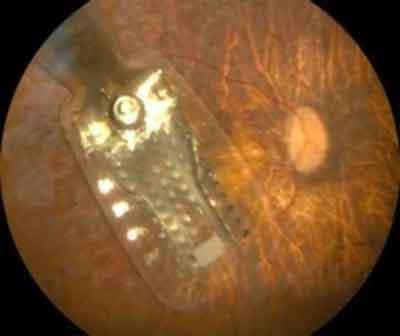- Home
- Editorial
- News
- Practice Guidelines
- Anesthesiology Guidelines
- Cancer Guidelines
- Cardiac Sciences Guidelines
- Critical Care Guidelines
- Dentistry Guidelines
- Dermatology Guidelines
- Diabetes and Endo Guidelines
- Diagnostics Guidelines
- ENT Guidelines
- Featured Practice Guidelines
- Gastroenterology Guidelines
- Geriatrics Guidelines
- Medicine Guidelines
- Nephrology Guidelines
- Neurosciences Guidelines
- Obs and Gynae Guidelines
- Ophthalmology Guidelines
- Orthopaedics Guidelines
- Paediatrics Guidelines
- Psychiatry Guidelines
- Pulmonology Guidelines
- Radiology Guidelines
- Surgery Guidelines
- Urology Guidelines
Scientists discover genetic link to ocular coloboma

A genetic mutation that contributes to sight loss in children has been identified by scientists.
The mutation was identified in patients with a disease known as ocular coloboma, which causes part of the eye to be missing at birth.
The findings shed light on its causes and help to explain how genes contribute to development of the eye, researchers say.
Ocular coloboma accounts for up to 10 per cent of all childhood blindness. It can cause a distinctive keyhole-shaped pupil as it commonly results in a missing segment in the iris, the coloured part of the eye.
Few genetic causes have so far been found to explain the cause of coloboma.
The research team -- lead by the University of Edinburgh -- worked with 12 families, studying the DNA of children with coloboma and their unaffected parents.
Using state-of-the-art genetic screening -- known as whole exome sequencing -- the scientists revealed mutations in 10 genes, three of which were linked to activity of one molecule.
The molecule -- known as actin -- is important to a number of vital cell functions, including maintenance of the cytoskeleton, which defines cell shape and structure.
Targeted gene sequencing was then carried out on a further 380 people with coloboma. This showed that one of the mutations -- a specific alteration in the gene ACTG1 -- recurred across a number of those tested.
The scientists edited this ACTG1 mutation into a line of mice using cutting-edge CRISPR/Cas9 gene-editing technology, and found that it had severe effects on the function of actin.
The newly-identified mutations are thought to affect how actin binds to other proteins and on actin stability, which could severely affect development of the eye in the womb, scientists say.
Dr Joe Rainger, Fight for Sight Early Career Investigator Fellow at the University of Edinburgh's Roslin Institute and Royal (Dick) School of Veterinary Studies, said: "Coloboma can have profound effects on visual ability, but it is very variable and therefore likely to be caused by a number of genes.
"Our work adds knowledge to our understanding of its onset as well as the importance of actin to eye development."

Disclaimer: This site is primarily intended for healthcare professionals. Any content/information on this website does not replace the advice of medical and/or health professionals and should not be construed as medical/diagnostic advice/endorsement or prescription. Use of this site is subject to our terms of use, privacy policy, advertisement policy. © 2020 Minerva Medical Treatment Pvt Ltd